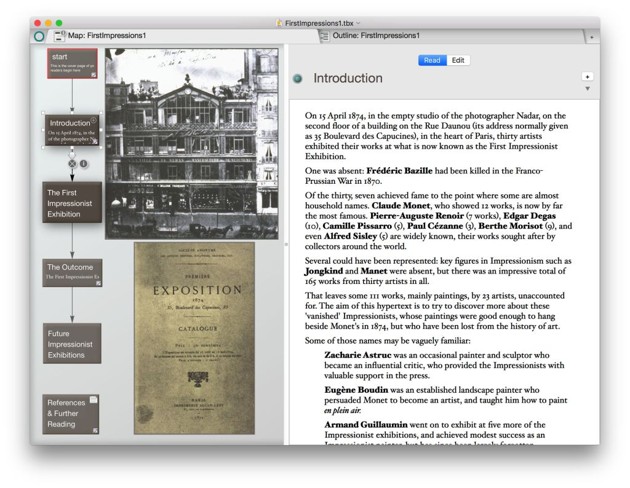Over the years, including in a number of posts collected on this Thread page, I’ve talked about some of the “artisanal” Mac-based programs I’ve used in my daily work since I made the PC->Mac switch eight years ago. The two I rely on most heavily are the writing program Scrivener, and the info-organizing program Tinderbox. (Plus, of course, TextExpander, which is on whenever my computer is.)
The hardest of these to explain is Tinderbox, because its very open-endedness means you can use it for almost anything — but you have to know something about it to start imagining what it might do. (“What could you use a pencil for? Well, you could make a list...”) Thus the more specific illustrations, the better. At his Welcome to Sherwood blog, Steve Zeoli has provided an ongoing set of examples and explanations.
Two more today. One is from the French philosopher Dominique Renauld. He has just posted this trippy video — narrated in his charming Gallic English, subtitled in his native French, scored with atmospheric music presumably from his previous career as a DJ — about one way he uses the program for research notes.
The other is from the painter and writer Howard Oakley of the Isle of Wight, on his Eclectic Light Company site. He has a new three-part series called “Making First Impressions,” about using Tinderbox and its sibling program StorySpace in preparing notes for an arts discussion. The series starts here. Below you’ll see a sample illustration.

Have fun!